The yachting°com Sailing Guide to Italy
Why sail in Italy?
- Variety of sailing locations - for beginners and adrenaline junkies.
- Diverse coastline, beautiful bays, deserted islands, sandy Caribbean-like beaches and wild steep cliffs.
- Picturesque medieval villages with magical harbours.
- Discover an abundance of ancient Romanesque monuments from Rome to Sicily.
- Local cuisine from fresh high-quality local ingredients.
Ask me about sailing in Italy
Leave your contact details below:
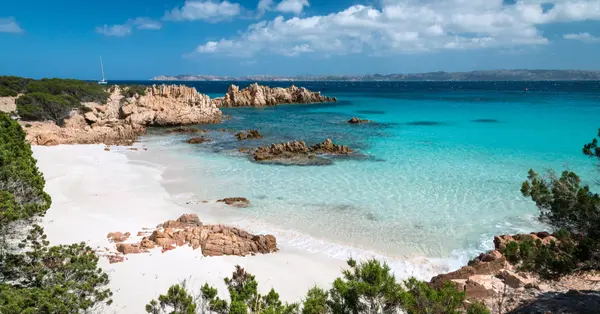.jpg)
Yachting areas in Italy
The regions in Italian waters are defined as follows: the Ligurian coastline around Genoa; the Tuscan Islands and adjacent mainland; the Pontine Islands; the Amalfi and Cilento area; northern and southern Sardinia; Sicily and the Aeolian islands; Calabria and the Adriatic in the region around Venice.
Sardinia
Sardinia is so large, varied and rich that it would be impossible to discover it all even over the course of 14-day sailing trip. If you sail from northeastern Olbia, you can take a tour of the frequently uninhabited, wild islands in the La Maddalena National Park, with their numerous beautiful sandy beaches and sheltered bays. From here, you can sail through the Strait of Bonifacio and visit the island of Corsica where you’ll find the stunning town of Bonifacio perched on a cliff high above the sea. Even on the southern coastline of Sardinia, you’ll discover plenty of secluded bays, fjords, and cosy beaches. Other beautiful spots to visit are the region of Costa Rei to the southeast of the island and the coastline west of Cagliari. If you want to spice up your trip with a bit of fishing or diving, anchor by the islands of Sant'Antioco or San Pietro. The south of Sardinia hides many an ancient remain of this island’s colourful past.
The most famous and most luxurious tourist area on Sardinia is without a doubt the Emerald Coast - Costa Smeralda - located in the northeastern part of Sardinia, north of Olbia.
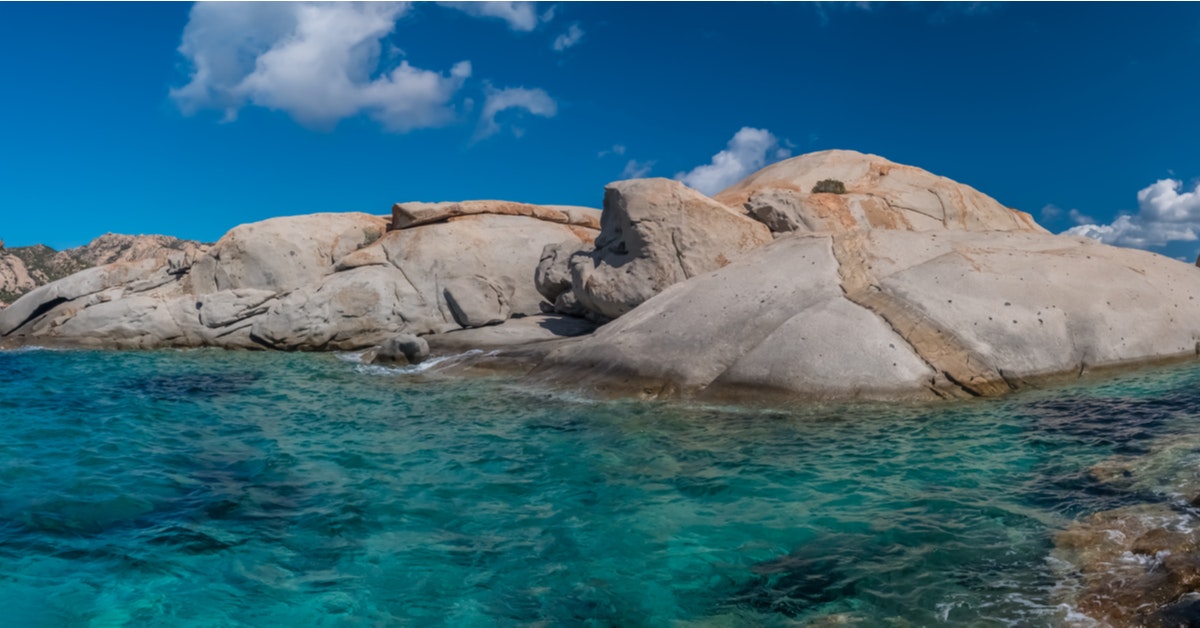 La Maddalena
La Maddalena
The Tuscan Islands and adjacent mainland
The best yachting location in this area is undoubtedly Elba. This is not only the site of Napoleon’s exile, but also a stunning island which can be explored over and over again. There are safe anchorages with magnificent sandy beaches, a cable car to the highest peak offering a wonderful view, romantic medieval towns (top of the list being Portoferraio), or the enclaves of the rich and famous where people such as Roman Abramovich moor with their modest barges.
The Tuscan yachting region is bordered to the north by the River Magra and to the south by the town of Civitavecchia. As well as Elba, it includes the island of Capraia (a former penal colony and now a fantastic diving spot), Pianosa, Giglio (infamous for the grounding of the Costa Concordia) and Montecristo (the setting for The Count of Montecristo by Alexander Dumas) that all make up part of the Tuscan Archipelago National Park. Apart from a few exceptions, these islands are rocky, rising sharply from the sea. In contrast, mainland Tuscany is full of fertile pastures, orchards, and vineyards. This picturesque region is home to the infamous Leaning Tower of Pisa, just a stone’s throw from the marina, and homemade saffron ravioli which you can savour in one of the authentic Tuscan restaurants.
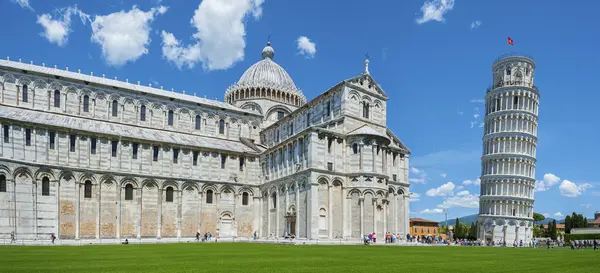.jpg)
Sicily and the Aeolian Island
Sicily is a world of its very own. The east is dominated by Etna, the most active volcano in Europe, and separated from Italy by the Strait of Messina. This captivating island, although largely mountainous, is abundant with citrus groves, vineyards and olive trees. Palermo is truly enchanting with its own characteristic charm, and you’ll likely be setting sail from its natural harbour. Sailing along the northern coastline, you won’t miss the Appenino Siculo mountain range at almost 2,000 m high. From Etna in the direction of Mount Vesuvius, the volcanic belt is completed by the Aeolian Islands where you’ll find the captivating and still active volcano of Mount Stromboli. These small islands include both active and extinct volcanic cones. As well as stunning walks past smoking volcanic chimneys, you’ll have the chance to bathe in the hot pools and volcanic mud which is a wonderful experience. The best harbours for sailing to Lipari are the Porto Rosa and Milazzo marinas, the island of Vulcano only being three hours away by boat. The Strait of Messina is a space with regulated entry and transit. For this reason, you must contact the coastguard on channel 10 before entering; otherwise, you risk getting fined.
Weather and climatic conditions
Thanks to the Alps, which act as a natural barrier in the region against the entry of cold winds, the rule to go by in Italy is that the further south you sail, the hotter you will be. Genoa in August will average 25°C, whereas in Palermo, the temperature is around 27°C. The difference in sea temperatures is similar - 23°C in contrast to 26°C. Storms occasionally occur in summer, accompanied by strong winds and rough seas. They appear mainly along the coastline, typical for the south of Sardinia, but usually only last a few hours.
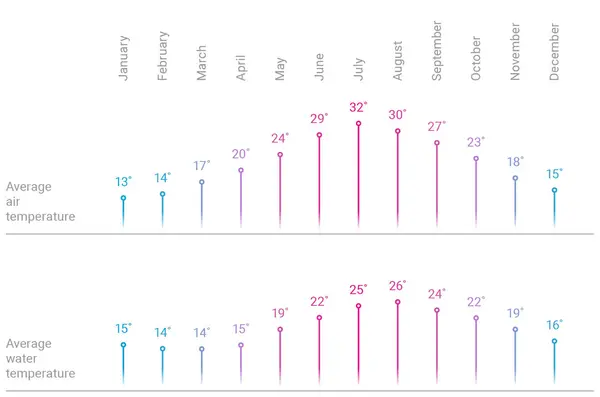.jpg)
Winds
You will hear these four names in relation to winds and the weather forecast: the Mistral, Libeccio, Tramontana, and Bora. The Mistral, which we are well-acquainted with from Croatian waters, mainly blows here in the area of Corsica and northern Sardinia, from the north or northwest. The Libeccio is less well-known southwesterly wind that blows mostly in the Ligurian Sea and around Corsica in the northern half of the Tyrrhenian Sea. It regularly reaches a force of 5-8 on the Beaufort scale (BFT) and brings rain, usually lasting 1-4 days. Those who visit the western coastline of Italy in winter or autumn have a good chance of getting acquainted with the Tramontana. This often reaches storm strength, especially near the mountainous coastline, where it can get very gusty. This northeasterly wind usually lasts 1-2 days.
You will experience the hot, southerly wind known as the Sirocco mainly to the south of Sardinia, Sicily, and the Italian mainland. This can also reach storm strength and lasts for 2-5 days. As it blows from the Sahara, it often contains particles of red sand. The Bora can last up to 22 days and primarily affects the northern Adriatic Sea. It is felt most in the winter and blows from the north.
Other yachting areas in Italy
The Pontine Islands
Despite their beauty, the Pontine Islands are often overlooked by tourists. But being on a sailboat gives you the perfect opportunity to explore them. There’s the island of Capri, with its cliffed coastline and mountain capital (reachable by funicular from the harbour). Its beautiful caves and deserted bays are only accessible by boat. Or the evergreen island of Ischia, where you’ll discover hundreds of thermal springs and the snow-white church of Santa Maria del Soccorso overlooking the Tyrrhenian Sea. Another beautiful island is Ponza, which offers many safe and spacious anchorages. Rome, which is on the mainland, obviously needs no introduction. But well worth a mention is bustling Naples with Mount Vesuvius to the east and the buried city of Pompeii, both of which are suitable for a day trip.
Amalfi and Cilento
Believe it or not, Amalfi was a powerful and famous seafaring republic during the Middle Ages, whose destruction only came about when an earthquake struck in the 14th century. The resulting tremors caused most of the town to fall into the sea. Mountains, beautiful scenery and small villages built into the cliffs lining the coastline typify this region. It is precisely in the Amalfi area, near the small islands of Li Galli, that sirens lured the mythical Odysseus onto the rocks with their enchanting song. The Cilento area is essentially a huge national park dotted with historical villages where people still live as they did in days gone by. And this is no surprise as the area attracts only a few tourists.
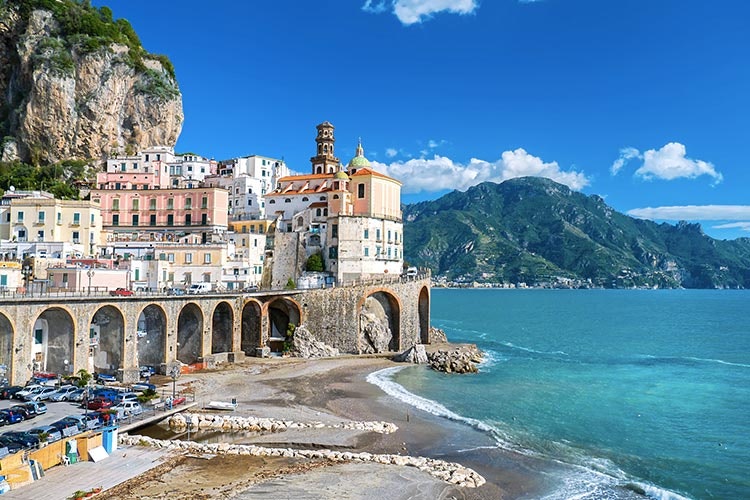
The Southern Adriatic Sea
This part of the Italian yachting region is the coastline from the tip of the heel to the harbour town of Brindisi. There are only six harbours here. Similar to its western neighbour, this area is also a superb spot to stop and rest for yachts sailing across the Ionian Sea on their way to Croatian, Montenegrin or Greek waters.
The Ligurian Coastline
The northernmost yachting region spreads out all the way from the border with France to the mouth of the River Magra, the centre being the largest Italian harbour of Genoa. You will either love or hate Genoa. Its two marinas are perfectly situated right in the centre of this vibrant city. But don’t expect the sea to be clean here. When sailing in, the immense peaks of the Alps are behind you and ahead in the distance, towards your bow, you’ll see the outline of the wild island of Corsica shrouded in mist. Wonderful scenery is provided by the Riviera di Levante to the west of Genoa, where the picturesque countryside blends with beautiful, medieval towns in Mediterranean pastel shades. The famous La Spezia Bay and mouth of the River Magra is also famous for its natural beauty. Sailing along the dramatic coastline of the Cinque Terre area, you’ll find five amazing, colourful tiny villages squeezed onto the steep rocks.
The Venetian Lagoon
This large, rugged lagoon spreading out around the capital, created a natural shield against attackers in the ancient Roman period. Today, you can sail around its many diverse little islands where the local Venetians escape from tourists to enjoy a picnic - for example, to the seldom-visited island of Sant' Erasmo, a paradise of vegetable markets and known for its abundant harvest of artichokes and asparagus, or the island of Burano, where you can liven up your trip by sampling the food and visiting the famous glassworks.
.jpg)
The Ionian Sea
When you steer your yacht towards the Gulf of Taranto and sail beyond the heel of Italy, you will be sailing in Italian waters least frequented by sailors. The Calabrian part of the southern coastline is lined with steep mountains and wild rocks, whereas the Apulian coastline boasts sunny plains and undulating hills. The whole of the Italian Ionian Sea does, however, have one thing in common: amazingly long sandy beaches that remain almost completely deserted. This area is also a very suitable place to stop off when sailing to Croatia, Montenegro or Greece.
Italian gastronomy
If you think you know what a real Margherita pizza tastes like, anchor in Naples for a while and head to the Centro Storico where they will convince you otherwise. The tomatoes here come from the same volcanic soil that buried Pompeii, the local mozzarella is made from buffalo milk and, together with freshly picked basil, forms this most famous Neapolitan dish.

In Sicily, the locals will educate you how superbly prepared fish should taste. Once you try the local salt-baked tuna with anchovies, garnished with pumpkin flowers and stuffed with cheese, nothing else will do. If you prefer to cook something up in the boat’s galley, stop off in the morning in Catania at the famous La Pescheria fish market, where old men will try to convince you of the merits of their respective catch. There is a grocery market just a stone’s throw from there too.
The Italian coastline and islands offer you culinary delights like this and much, much more. The differences in individual areas are enormous.
When should you sail to Italy for a yachting holiday?
In spring and autumn, you’ll get smooth sailing combined with sightseeing in all yachting areas in Italy.
Marinas
Croatia probably has the greatest number of marinas in the world, but Italy is certainly not too far behind. There is no danger of you not finding somewhere to shelter when the weather is bad. Just count on the fact that the price for spending the night is somewhat more expensive - EUR 100 per night for a 12 m sailing yacht is quite the norm here. But it is usually no problem to anchor near the marina and travel into town by dinghy. Some harbours even offer free parking for visitors but these fill up very quickly in high season, so you do need to book in advance.
Important information for all sailors is that the last week in July and the first three weeks in August are a nationwide holiday for the Italians, known as the Ferragosto. Therefore, it would be best to avoid Italy at this time. If you think that 20 boats in a bay in Croatia is full, imagine as many as 50 boats in a bay in Italy during Ferragosto. The bay is generally empty in the morning with just a few sailing yachts anchoring there. Boats start sailing in after 10:00 in the morning, especially motorboats. The number of boats peaks at around 14:00 in the afternoon but boats are continually sailing in and out throughout the day. The Italians picnic on their boat, swim a few strokes and then sail away again. There are so many boats in the bay that you can’t even go for a swim. Around 17:00 in the afternoon, everyone raises anchor and sails off to the harbour to sit in restaurants all evening. Evenings and nights are quiet again, with only a few sailing yachts sitting at anchor.

.jpg)